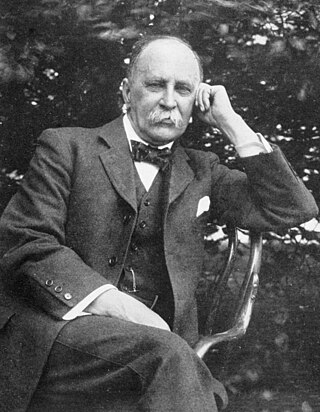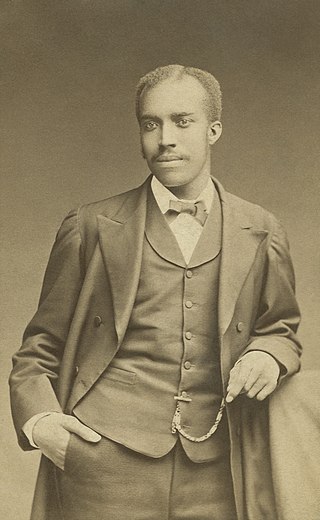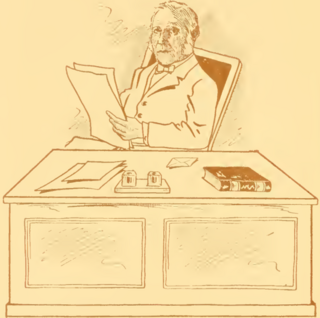Related Research Articles

Sir William Osler, 1st Baronet, was a Canadian physician and one of the "Big Four" founding professors of Johns Hopkins Hospital. Osler created the first residency program for specialty training of physicians, and he was the first to bring medical students out of the lecture hall for bedside clinical training. He has frequently been described as the Father of Modern Medicine and one of the "greatest diagnosticians ever to wield a stethoscope". Osler was a person of many interests, who in addition to being a physician, was a bibliophile, historian, author, and renowned practical joker. Outside of medicine, he was passionate about medical libraries and medical history and among his achievements were the founding of the History of Medicine Society, at the Royal Society of Medicine, London. In the field of librarianship he was instrumental in founding the Medical Library Association of Great Britain and Ireland, the Association of Medical Librarians with three others, including Margaret Charlton, the medical librarian of his alma mater, McGill University. He left his large history of medicine library to McGill, where it continues to exist as the Osler Library.

Nathan Francis Mossell was the first African-American graduate of the University of Pennsylvania School of Medicine in 1882. He did post-graduate training at hospitals in Philadelphia and London. In 1888, he was the first black physician elected as member of the Philadelphia County Medical Society in Pennsylvania. He helped found the Frederick Douglass Memorial Hospital and Training School in West Philadelphia in 1895, which he led as chief-of-staff and medical director until he retired in 1933. Gertrude Bustill Mossell was his wife.

Daniel Hale Williams was an African-American surgeon who founded Provident Hospital in 1891. It was the first non-segregated hospital in the United States. Provident also had an associated nursing school for African Americans.

Anderson Ruffin Abbott was the first Black Canadian to be licensed as a physician. His career included participation in the American Civil War. Significant roles included coroner of Kent County, Ontario, and surgeon-in-chief.

John Archer was a prominent physician, slaveowner, and U.S. Congressman from Maryland, representing the sixth district for three terms from 1801 to 1807. His son, Stevenson Archer and grandson Stevenson Archer II were also Congressmen from Maryland.

Christopher Christian Cox was known as an American surgeon, professor at Philadelphia College of Medicine and the first lieutenant governor of Maryland.

Alexander Thomas Augusta was a surgeon, veteran of the American Civil War, and the first black professor of medicine in the United States. After gaining his medical education in Toronto, Canada West from 1850 to 1856, he set up a practice there. He returned to the United States shortly before the start of the American Civil War.

Fredrick Louis Detrick, was a U.S. Army physician, flight surgeon and pilot. He is the namesake of Fort Detrick, Maryland. Detrick, who was a teaching surgeon on the faculty of the Johns Hopkins University Hospital, Baltimore, served in France during the First World War and was a member of the Maryland National Guard when he died of a heart attack in 1931.

Richard Sprigg Steuart (1797–1876) was a Maryland physician and an early pioneer of the treatment of mental illness. In 1838 he inherited four contiguous farms, totalling approximately 1900 acres as well as 150 slaves.
The Maryland State Medical Society, commonly known as MedChi, a shortened form of the state medical society's full and ancient historic name: "The Medical and Chirurgical Faculty of the State of Maryland" is the Maryland state-level affiliate of the national body of the American Medical Association, founded in 1799. It represents the interests of physicians and citizens in the state of Maryland "from unscrupulous and untrained practitioners holding themselves out as health care providers." "MedChi" has offices in Baltimore and Annapolis, the state capital.

Granville Sharp Pattison (1791–1851) was a Scottish anatomist. Professor of Anatomy at London University, after losing two British positions, he emigrated permanently to the United States to be a professor at New York University.
William Lane Watkins was an African American physician and schoolteacher. He practiced medicine and was the teacher and principal of Mt. Nebo School for Colored Children in Prince George's County, Maryland, and was the first black man to graduate from the Boston University School of Medicine.
James Maxie Ponder was a physician and the first African-American admitted to practice at Mercy Hospital in St. Petersburg, Florida. He was regarded as an influential leader of the African American community in St. Petersburg. For his service in the US Army Medical Reserve Corps during World War I, Ponder received a Presidential Citation.
Frank Erdman Boston was an American physician in Philadelphia and Lansdale, Pennsylvania.
Mary Sherwood was a physician, educator, and spokesperson for preventive medicine, public health, women's health, childcare. She played a vital role in many women's organizations and clubs, as well as contributed to many medical social movements in Maryland and Baltimore.
John Emory Toussaint Camper, born in Baltimore, Maryland was a prominent physician and Civil Rights activist. Raised in Sparrows Point, Camper was a graduate of Frederick Douglass High School. Prior to attending Howard University, Camper served in World War I, and during World War II, he was appointed to the Maryland Commission to Study Problems Affecting the Colored Population and served as a draft-board physician. While attending Howard, Camper was a star athlete in several sports, including football, and he was president of the school's chapter of the Phi Beta Sigma Fraternity.

Lilian Welsh was an American physician, educator, suffragist, and advocate for women's health. She was on the faculty at Woman's College of Baltimore and an active member of National American Woman Suffrage Association. Welsh was posthumously inducted into the Maryland Women's Hall of Fame in 2017.
William Hepburn Buckler, FBA (1867–1952) was a French-born American classical scholar, archaeologist, diplomat and lawyer. He practised as a lawyer in Baltimore before serving in a number of diplomatic posts, which included service in London during the First World War and membership of the US delegation to the Paris Peace Conference of 1919. While a lawyer, Buckler had developed an interest in archaeology and classical scholarship. He was part of the US archaeological expedition (1910–14) to Sardis in modern-day Turkey and returned there in the 1920s to catalogue and decipher ancient inscriptions uncovered at the site – a project he remained involved with throughout the 1930s. He became an expert in the Lydian language and authored two monographs and three volumes of Monumenta Asiæ Minoris Antiqua. His scholarship was recognised with three honorary doctorates, a Festschrift and fellowship of the British Academy.

Amanda E. Taylor Norris was an American physician, the first woman physician in the state of Maryland. After graduating from the Woman's Medical College of Pennsylvania in 1880, she worked in private practice in the Baltimore area, spending nearly two decades teaching at coeducational and women's medical schools there.

James Henry Jarrett was an American politician and physician from Maryland. He served as a member of the Maryland House of Delegates, representing Harford County in 1856.
References
- 1 2 "BALTIMORE'S OLDEST COLORED DOCTOR DIES AFTER LONG ILLNESS: Was Oldest Physician in The City". Baltimore Afro-American. July 11, 1919.
- ↑ Old Maryland Vol.VII No.1. 1911.
- ↑ Clark Hine, Darlene; Jenkins, Earnestine (1999). A Question of Manhood: A Reader in U.S. Black Men's History and Masculinity, Volume 2. Indiana University Press. pp. 215–216.